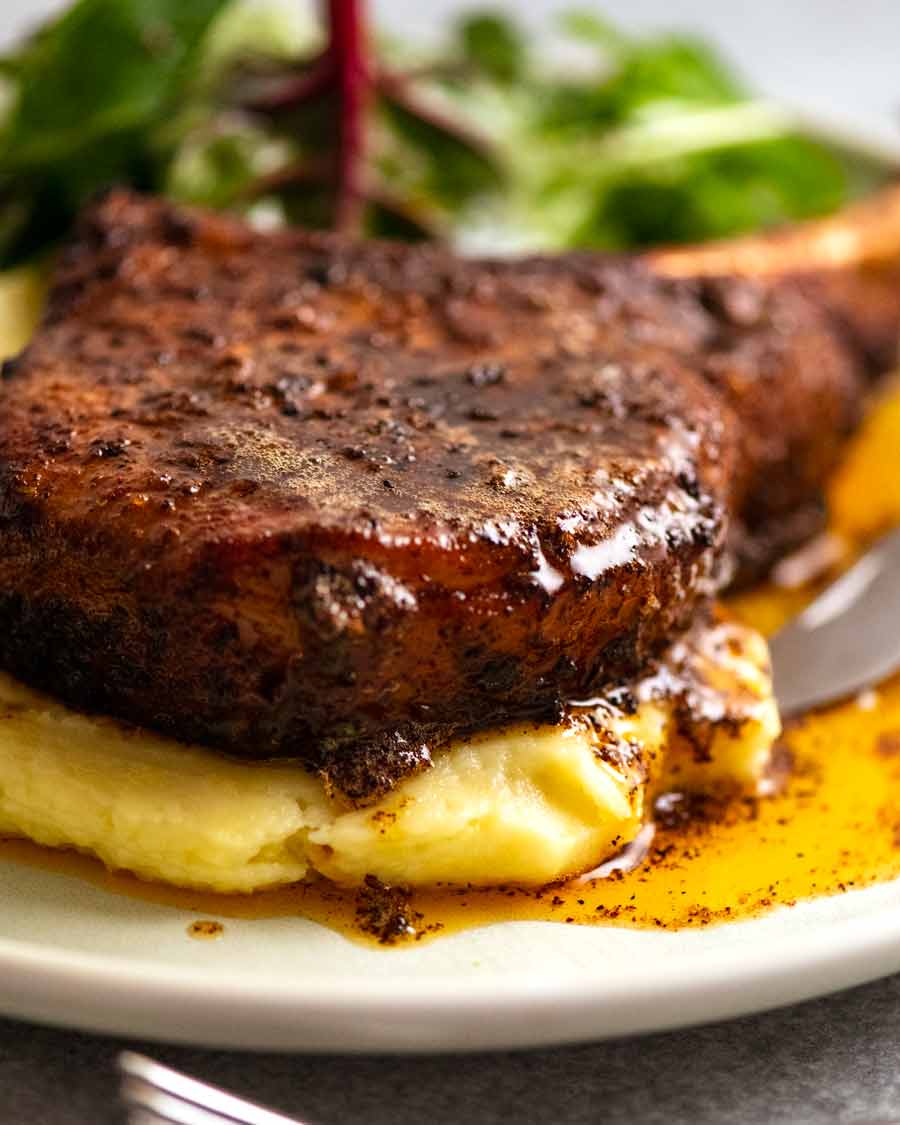This is just a great, simple pork rub that can be used to season any pork chop. It adds terrific flavour and colour, and if you throw in a knob of butter at the end it also forms a zero-effort, tasty sauce. A super-handy recipe to know! This is a reader-favourite recipe included by popular demand in my debut cookbook “Dinner”!
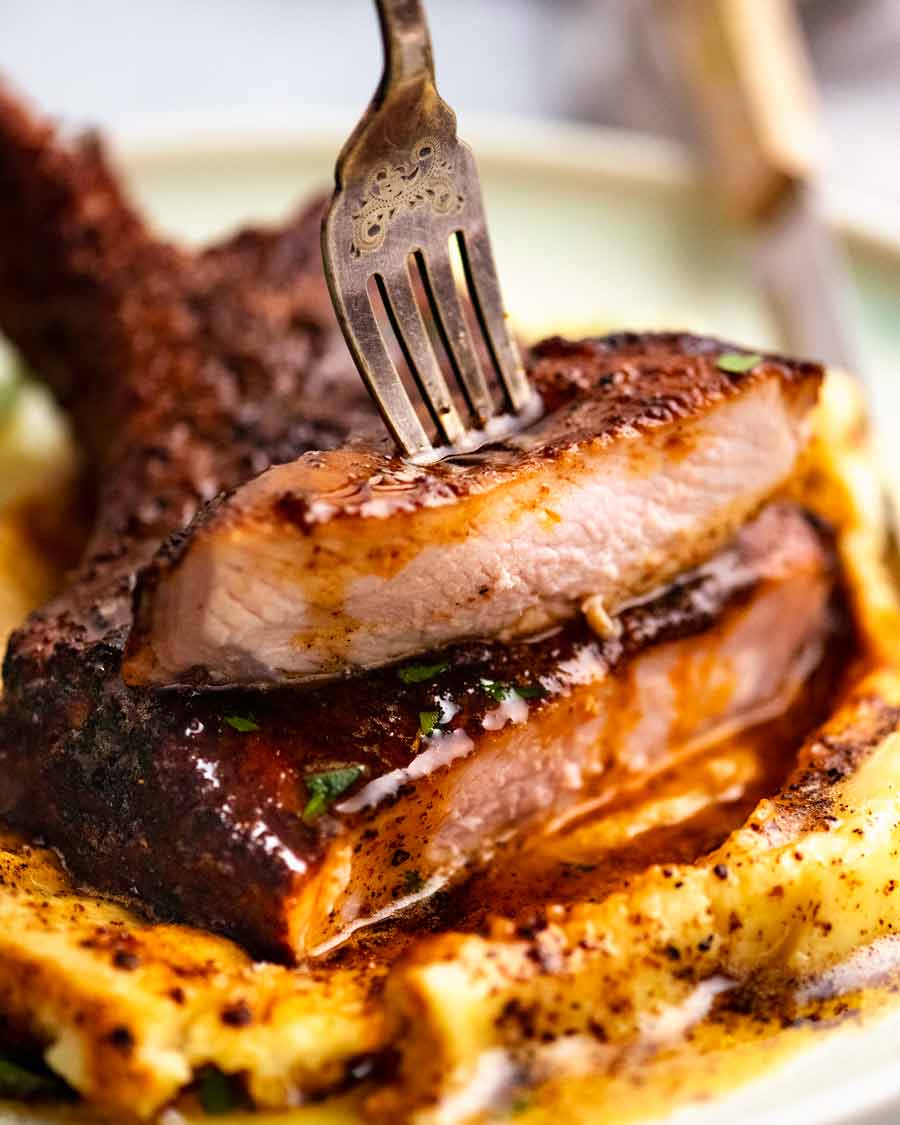
Pork rub
This recipe is one of those that I think of as a “life essential” because it’s an instant, no-brainer way to add bags of flavour to pan-fried pork. But I always hesitate to share it, thinking, “Meh! It’s too easy!” I mean, the recipe directions would be: “Mix. Use.” 😂
I’m joking. Well, sort of! Those are the directions for the pork rub. But I do actually show you how to use it too!!
ABOUT THIS PORK RUB
I think you’ll all like this pork rub because for one, it’s made with spices you probably already have. There’s enough spices in it that it’s no big deal if you happen to be missing one or two, as there are plenty of substitution options.
The seasoning adds great savoury flavour to any type of pork chops, as well as staining the pork a lovely warm deep golden brown. And here’s the cherry on this sundae: While the pork is resting, melt a bit of butter in the same skillet and voila! You’ve got a flavoured butter to use as the sauce!
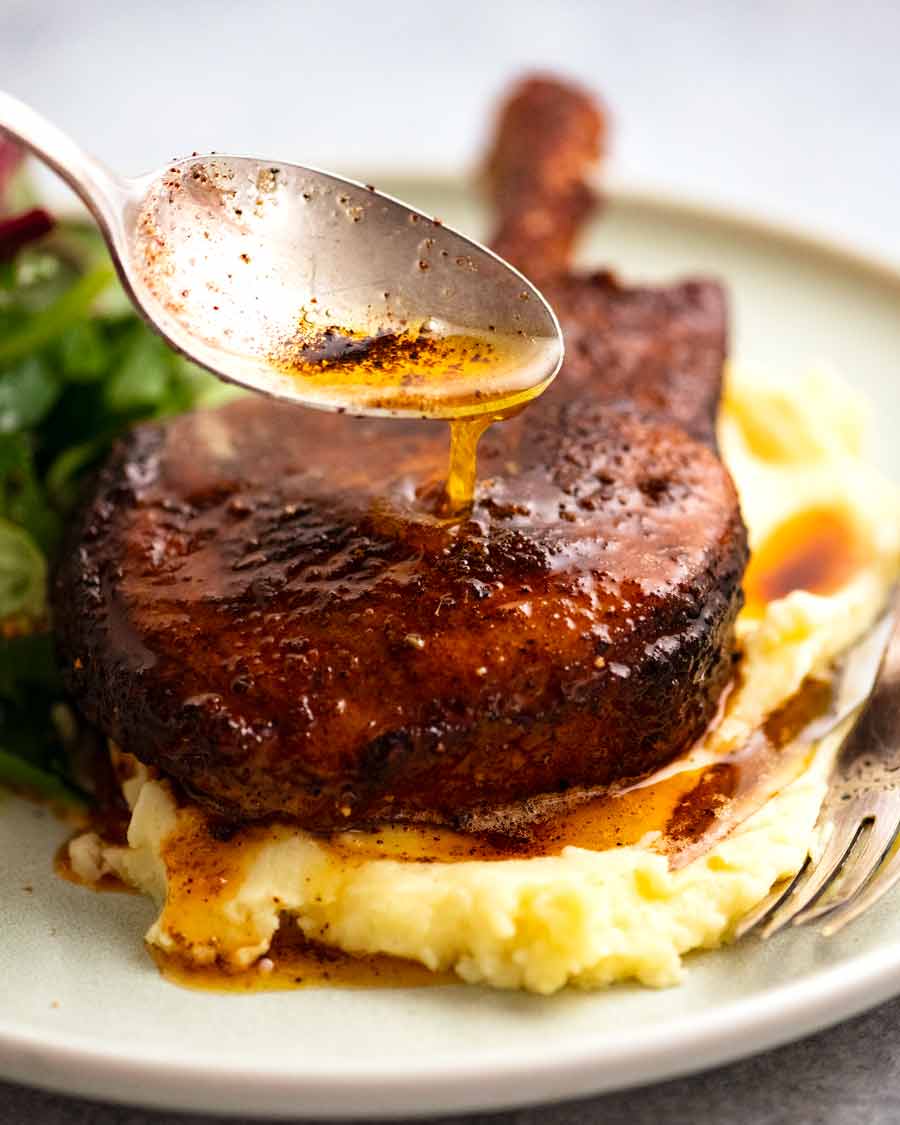
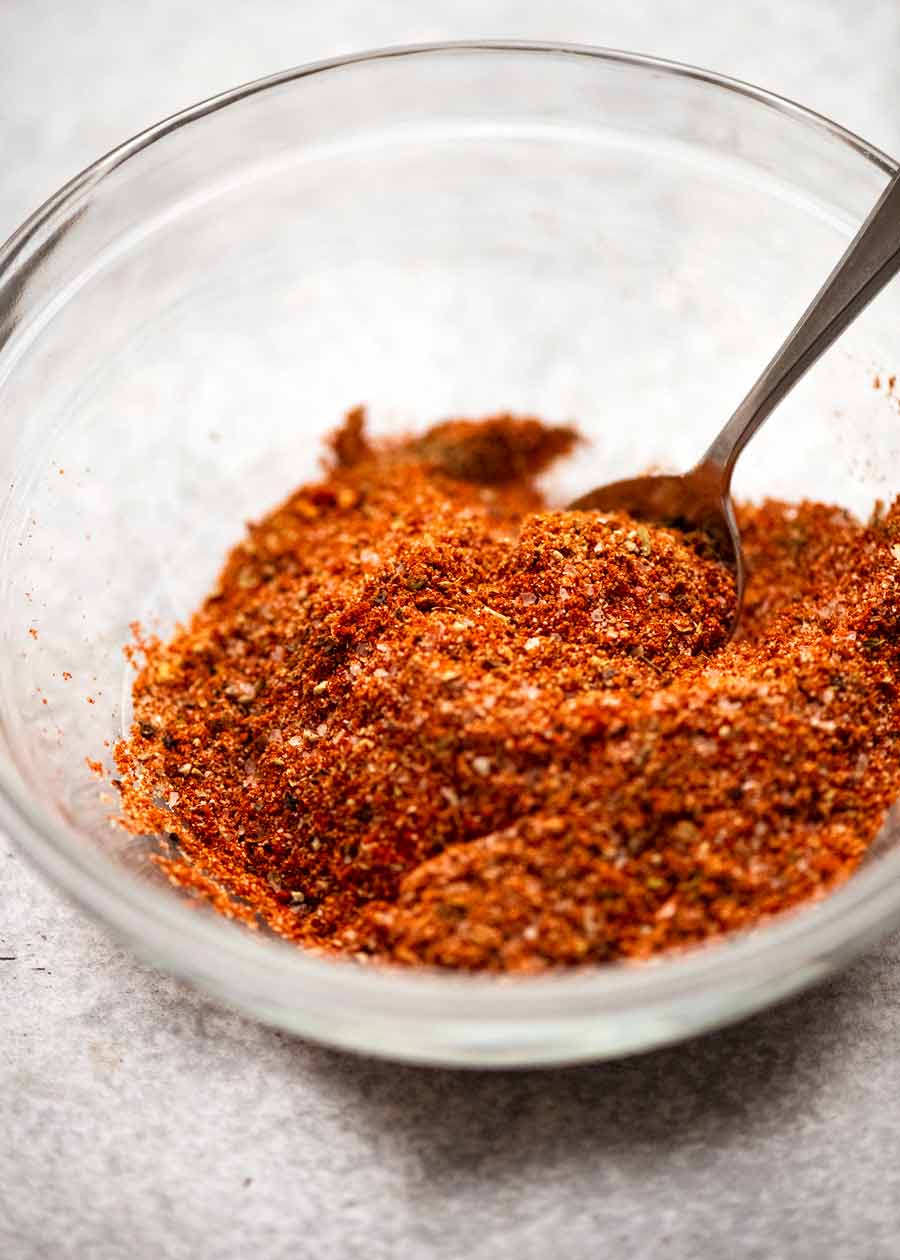
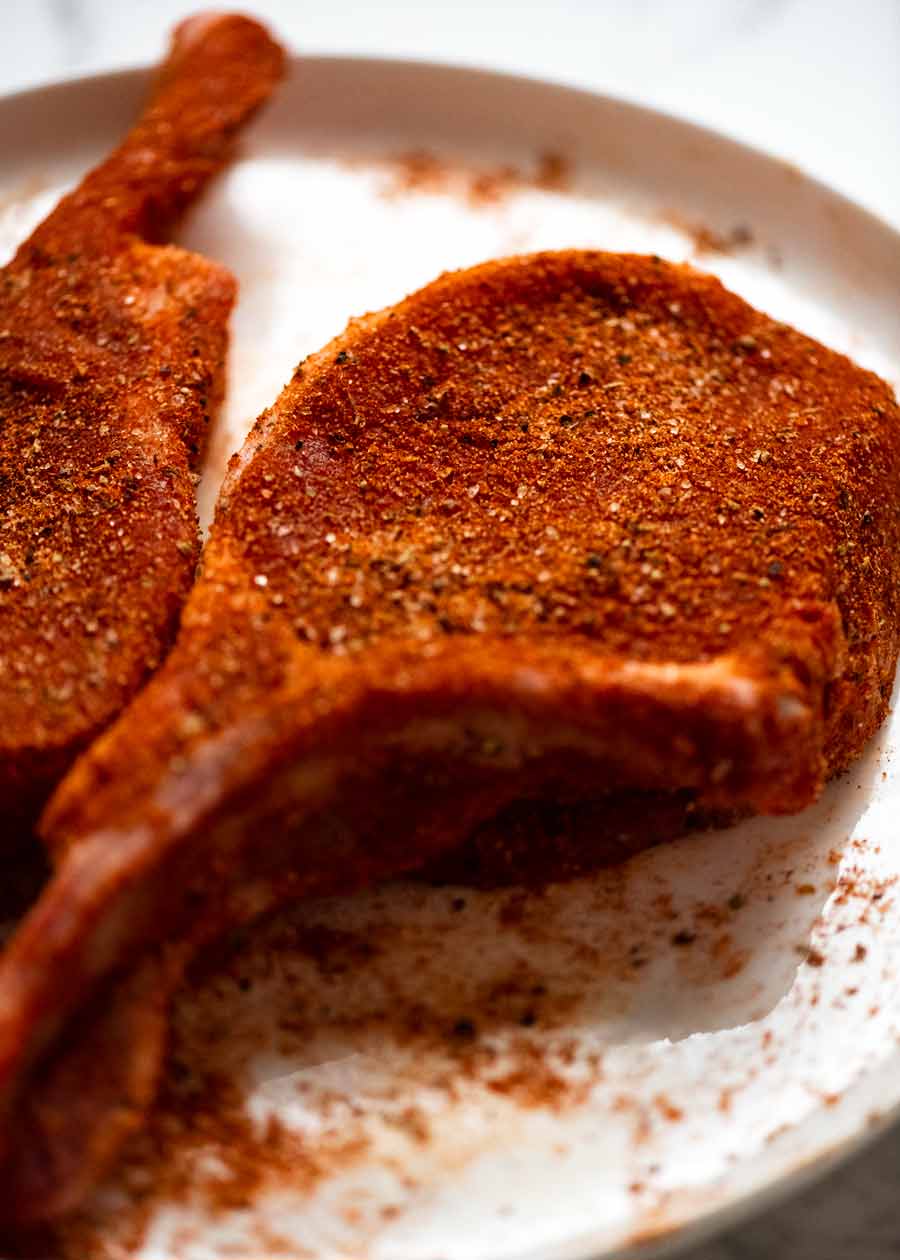
Ingredients in pork rub
Here’s what goes in this pork seasoning. There’s no sugar in this pork rub because I find it just burns before you get a nice caramelisation on the crust.
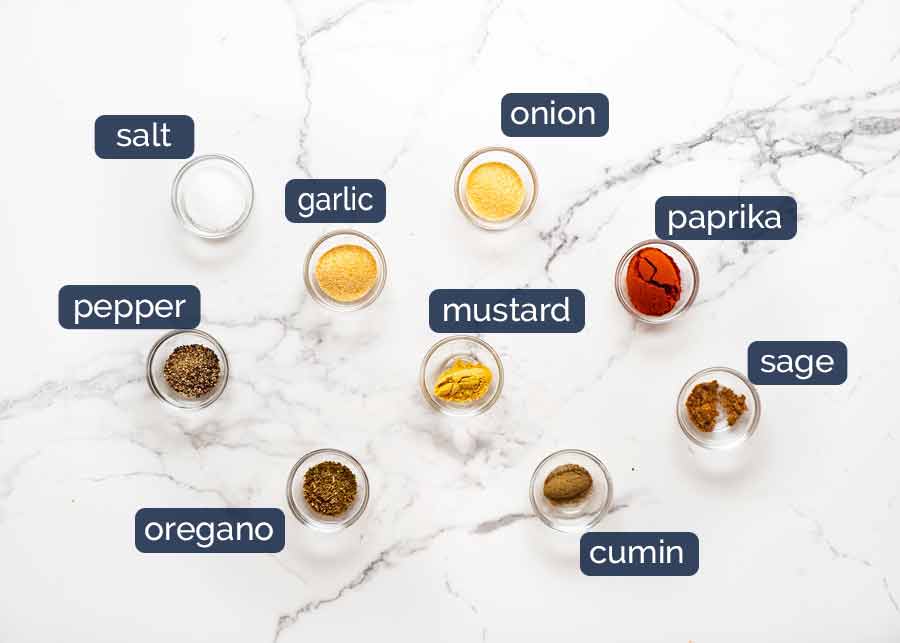
These are all fairly common pantry spices so rather than talking through each of them, I’ll list the substitution options.
-
Paprika – The recipe calls for smoked paprika, ideally. The smoked flavour brings a little something extra to this pork seasoning. Sub: It’s totally fine to use normal or sweet paprika instead. Or hot, if you dare!
-
Onion and garlic powder – Sub: Double up on either if you are missing one. I don’t recommend making this if you’re missing both as they really give the rub the depth it needs. If you’re out, try my pork marinade instead! (Also made from pantry ingredients)
-
Oregano – Sub: 1 tsp mixed herb, or 1/2 tsp thyme or rosemary
-
Mustard powder – Sub: 1/4 tsp extra onion or garlic powder
-
Cumin – Sub: Coriander powder
-
Sage – Sub: Coriander powder or extra mustard powder
HOW MUCH SPICE RUB IT MAKES
This makes 4 tablespoons of seasoning which is enough for 4 BIG, thickly cut pork chops or 6 smaller, thinner chops.
HOW LONG CAN YOU KEEP THIS SPICE RUB?
Weeks. Months! Whatever the shelf life of your spices are, as long as you keep it in an airtight jar in a cool, dry place out of direct sunlight.

How to cook seasoned pork chops
I know you don’t need step photos for how to make the pork rub! 😂 But I thought you might find it useful to see how to apply it, and how to cook thin vs thick-cut chops.
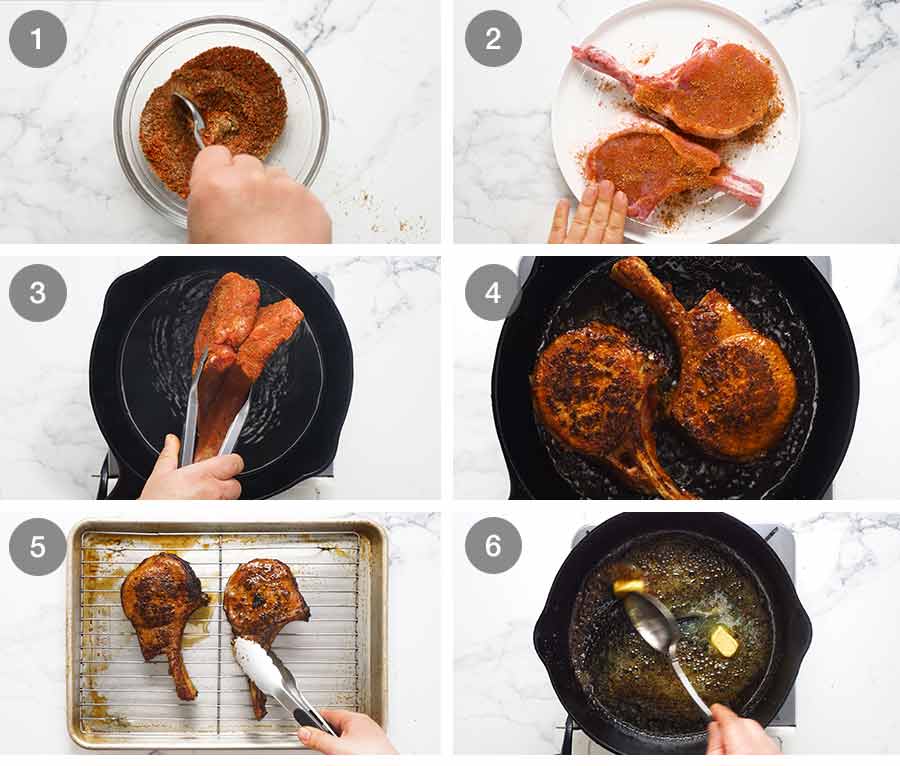
-
Pork rub – Just mix the spices together. Keep it in an airtight container if you don’t plan to use it straight away.
-
Season pork with rub – Pat the pork dry with paper towels. Dry meat will sear more nicely than wet meat. Also, if it’s too wet, contrary to what you might assume the seasoning doesn’t stick as well. It sort of cakes and tends to smear off.
Sprinkle the seasoning over both sides of the pork, and rub lightly with your fingers to distribute it. Then press the sides of the pork into the leftover rub on the plate to coat them too.
How much rub to put on? Whatever sticks, stays! Shake off the excess before cooking otherwise it will come off in the pan and burn.
-
Sear sides (for thick chops) – Heat oil in a heavy based skillet over medium high heat. I use my cast iron pan (it’s a Lodge, see here). This type of pan has excellent heat retention and distribution for searing proteins. Vintage pans aside, they’re also extremely good value!
If you’re cooking thick chops (2cm / 0.8″+), start by searing the sides first to get some colour on the meat / fat. Hold the chops in the skillet using tongs and sear for about 3 minutes, moving the point of contact to get all surfaces, until you get some nice colour on it.
You won’t need to do this with thinner chops as the radiant heat from the skillet / fat splatter will colour the sides.
-
Cook chops – For thin chops about 1.75 cm / 0.7″ or less, cook them entirely on the stove. For thick chops 2cm / 0.8″+, sear on the stove until they are a lovely deep golden brown all over, then finish in the oven. Why? Because otherwise you end up with a thick band of overcooked pork by the time the inside is cooked through.
Internal temperature of cooked pork – Aim for 65°C/149°F. This is the “pull temperature”, ie. the target temperature at which the pork should be removed from the oven or stove.
This will rise during rest by around 5°C / 9°F to 70°C / 158°F which is optimum juiciness with no pink (see photo at top of post. Juicy!).
-
Rest 3 minutes – Resting cooked proteins is essential to allow the meat juices to redistribute throughout the meat fibres. If you don’t rest meat, the juices will run out onto the plate when you cut into it. No! We want the juice to remain in the meat so it ends up in our mouth! 😂
-
Flavoured butter sauce – While the pork is resting, throw the butter into the still-hot skillet and let it melt until bubbly. Scrape the bottom of the skillet so all the tasty flavour left from the pork and residual rub mixes into the butter. It becomes a lovely reddish colour and it’s packed with flavour!
